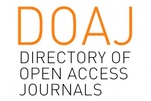Evaluating Quality in Fully Online U.S. University Courses: A Comparison of University of Maryland University College and Troy University
DOI:
https://doi.org/10.17143/rbaad.v5i0.176Palavras-chave:
quality, online, university, rubric, evaluationResumo
A key component of quality assurance in online higher education is the periodic evaluation of fully online courses, by both internal and external reviewers, against standards developed by the offering institution. These standards can address a variety of quality areas including but not limited to: the organization and structure of the online course; the extent to which technology is used to foster learning and student engagement; and the use of available communication features to stimulate student discussion and interaction. In this paper the online evaluation processes and criteria of the two largest U.S. state universities involved in online education – University of Maryland University College and Troy University – are compared. It will be shown that the two institutions arrived independently at very similar quality standards for online courses, and that these standards are congruent with those developed and promulgated by nationwide higher education accreditation agencies in the U.S.Downloads
Referências
ALVES-MAZZOTTI, Alda Judith; GEWANDSZNAJDER, Fernando. O método nas ciências naturais e sociais. Pesquisa quantitativa e qualitativa. São Paulo: Pioneira Thomson. 2. ed. 1999.
Anderson, R. & Puckett, J. (2005). The usefulness of an online platform for capturing literacy field experiences: four lessons learned. Reading, Research & Instruction, 44, 3, 22-46.
Council of Regional Accrediting Commissions. (March 2001). Best practices for electronically offered degree and certificate programs. Retrieved August 1, 2006 from http://www.wcet.info/resources/accreditation/Accrediting%20-%20Best%20Practices.pdf
Hosie, P. & Schibeci, R. (2005). Checklist and context-bound evaluations of online learning in higher education. British Journal of Educational Technology, 36, 5, 881-895.
Jin, S. H. (2005). Analyzing student-student and student-instructor interaction through multiple communication tools in web-based learning. International Journal of Instructional Media, 32, 1, 59-67.
Lao, T. & Gonzales, C. (2005). Understanding online learning through a qualitative description of professors’ and students’ experiences. Journal of Technology and Teacher Education, 13, 3, 459-474.
Moore, J.L. & Marra, R.M. (2005). A comparative analysis of online discussion participation protocols. Journal of Research on Technology in Education, 38, 2, 191-212.
Roblyer, M.D. & Wiencke, W.R. (2003). Design and use of a rubric to assess and encourage interactive qualities in distance courses. American Journal of Distance Education, 17, 2, 77-98.
Troy University. (2004). Course evaluation tool.
University of Maryland University College. (n.d.). Expectations for classroom setup and online teaching.
University of Maryland University College. (n.d.). Online classroom observation form.
Wang, A.Y., Newlin, M.H., & Tucker, T.L. (2001). A Discourse Analysis of Online Classroom Chats: Predictors of Cyber-Student Performance. Teaching of Psychology, 28, 3, 222-226.
Western Cooperative for Educational Telecommunications. (2005). Principles of good practice for electronically offered academic degree and certificate programs. Retrieved August 1, 2006 from http://www.wcet.info/projects/balancing/principles.asp
Yu, C., Durrington, V.A., & Olinzock, A.A. (2005). Expectations of online courses: the distance education administrator’s perspective. College & University Media Review, 11, 1, 51-69.
Downloads
Publicado
Como Citar
Edição
Seção
Licença
Todos os artigos publicados na Revista Brasileira de Aprendizagem Aberta e a Distância (RBAAD) recebem a licença Creative Commons - Atribuição 4.0 Internacional (CC BY 4.0).
Todas as publicações subsequentes, completas ou parciais, deverão ser feitas com o reconhecimento, nas citações, da RBAAD como a editora original do artigo.



 .
.








